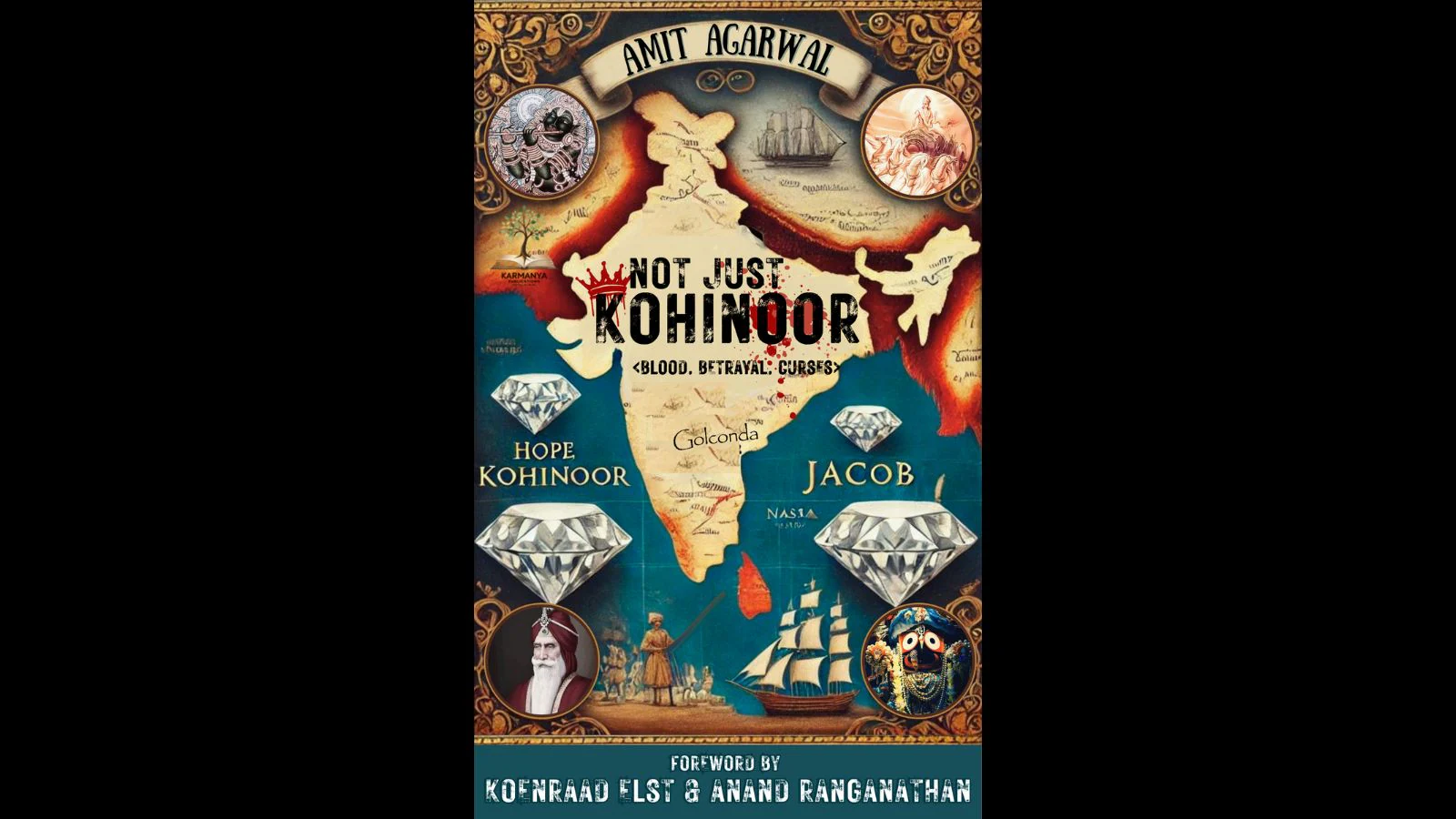By News18,Yuvraj Pokharna
Copyright news18

In an era where Bharat’s civilizational narrative is being fiercely reclaimed, Amit Agarwal’s ‘Not Just Kohinoor’ emerges as a fiery, unapologetic ode to the nation’s plundered treasures.
This telling work of the author isn’t just about diamonds — it’s a pulsating chronicle of Bharat’s plundered soul, told through the glittering, blood-soaked journeys of gems like the Kohinoor, Hope, Regent, Darya-i-Noor, and others, ripped from Bharat’s bosom by invaders and colonizers. With a narrative as sharp as a diamond’s edge, Agarwal doesn’t merely recount history; he demands we confront it.
Let’s get one thing straight and have the truth its day out in the sun: this is no dry academic tome, unlike many other Marxists disguised as academicians. Agarwal’s storytelling crackles with energy, weaving together assiduous research, myth, and raw emotion to trace these stones from the fabled mines of Golconda to the extravagant crowns of European monarchs.
The Kohinoor, often reduced to a colonial trophy, is the book’s beating heart and is a microcosmic symbol of the $45 trillion that Britain pilfered out of Bharat between 1765 and 1938, a sum 17 times the current GDP of the UK, as per renowned economist Utsa Patnaik, professor emeritus at New Delhi’s Jawaharlal Nehru University.
Agarwal’s dexterity lies in expanding the lens to lesser-known gems, each a silent witness to Bharat’s trauma. These aren’t just jewels; they’re symbols of our civilization’s journey, glory, betrayal, and enduring spirit.
What sets this book apart is its audacity. Agarwal doesn’t tiptoe around the truth. He lays it threadbare how these diamonds — born in Bharat’s sacred womb, adorning her temples and thrones — were stolen, recut, renamed, and flaunted in foreign museums, often stripped of their Indian origins. He argues with a conviction that’s hard to ignore, that the fight for their return must begin with telling their stories. And tell them with a flair that makes centuries-old sagas feel like front-page news. From the violent battles and betrayals that scattered these gems to the quiet humiliation of their display in foreign lands, Agarwal connects the dots between material loss and cultural amputation. The research ostensibly seems to be sincere and profound.
The strength of the book lies in its ability to be related to the modern Indian psyche. This is not just about diamonds; this is about sovereignty, heritage, and the intrepidness to demand what’s ours. Agarwal’s enthralling work is vivid, almost cinematic, as he paints the Golconda mines, royal treasuries, and the treachery of colonial powers. The use of maps, tables, and visuals he does adds a tactile dimension, pulling readers into the geographic and emotional odyssey of these stones. The pace is relentless; there’s no room for boredom here.
There’s a chapter on the Jacob Diamond that remains a standout, brimming with juicy anecdotes about the British Raj’s chicanery and the curious lives of maharajas with lecherous European wives. The author details quirky details—like the “Fishing Fleets” and “Cargo of Young Damsels”—that expose the preposterous human underbelly of colonial India. The weaving of Puranic stories into the story, which makes these diamonds seem like more than just money, is just as interesting. The author argues that these diamonds are divine, cultural, and civilizational totems. This isn’t just history; it’s a call to remember who we are and what our identity symbols are.
The forewords by Koenraad Elst and Anand Ranganathan are a treat, laced with their signature wit and razor-sharp insights. They set the tone for a book that’s as much a cultural manifesto as it is a historical account. But no book has no flaws. At times, the author could not contain his passion for restitution that veers into advocacy, which may polarize readers who prefer nuance over fervour. The narrative, while gripping, feels dense when diving into convoluted historical details—those looking for a breezy read might need to sip a few cups of coffee. The chapters are uneven, too; heavyweights like Kohinoor and Jacob get the lion’s share, while gems like Orlov and Nassak feel like afterthoughts. And while Agarwal hints at a sequel by omitting several notable diamonds, the absence of a broader diamond roster leaves you wanting more.
Verdict: Not Just Kohinoor is a triumph of storytelling and a clarion call for cultural justice. It’s not just about Bharat’s lost diamonds. It’s about a civilisationally wounded pride and its unyielding quest for reclamation. This fascinating work is both a loving paean to Bharat’s heritage and a gauntlet thrown at the feet of those who plundered it.
For history buffs, policy wonks, or anyone who feels the sting of colonial wounds, this book is a must-read in line with the ongoing decolonisation drive. It’s bold, it’s brilliant, and it’s unmistakably indigenous.
Yuvraj Pokharna is an independent journalist and columnist. He tweets with @iyuvrajpokharna. Views expressed in the above piece are personal and solely those of the author. They do not necessarily reflect News18’s views.



